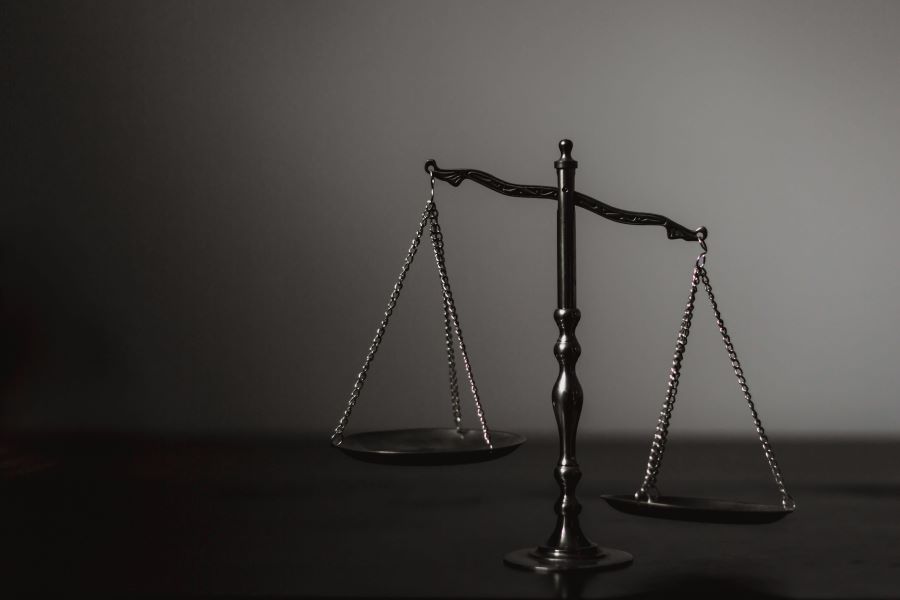Trade Cases

Section 232 Exclusions: The Steel Safeguard Precedent
Written by John Packard
October 8, 2017
The following article was written by trade attorney Lewis E. Leibowitz regarding the historical precedent for exclusion of products from any Section 232 decision that impacts imports of foreign steel. Leibowitz is well known to Steel Market Update, having spoken on trade issues at a number of SMU Steel Summit Conferences, and he has provided insights on many trade issues to SMU over the years. We have provided his contact information at the end of this article.
Section 232 and Exclusion of Steel Products from Import Restrictions: The Steel Safeguard Precedent
By Lewis Leibowitz
The Law Office of Lewis E. Leibowitz
America is wondering whether steel imports will be further restricted by the Trump Administration. This time, the ostensible basis is concern for national security.
The Administration made clear last summer that they expected a quick decision giving the steel industry more relief from foreign competition than they already enjoy from antidumping and countervailing duty orders. The decision has been delayed several times. Now the postponement is due to the pending debate on tax reform.
Whenever the decision comes out, a big part of the decision will be what to do about steel products that are required by American manufacturers but are not available from domestic steel producers. Import restrictions that do not consider the devastating consequences of denying U.S. manufacturers the raw materials they need at globally competitive prices will not be viable. U.S. Trade Representative Robert Lighthizer said as much in congressional testimony last June. There will be a process for excluding products and possibly countries that are needed in the United States.
How this process would work is very much on the minds of U.S. manufacturers, importers and traders, as well as foreign steel producers. If Section 232 restrictions are leveled at all, and I believe that is still a big “if,” what will the exclusion look like?
 The last time broad steel import restrictions were imposed was in 2002-03, under the “safeguard” law (section 201-203 of the Trade Act of 1974). When President George W. Bush proclaimed the restrictions in March 2002, he incorporated an exclusion provision, delegating to the U.S. Trade Representative the authority to work out the details.
The last time broad steel import restrictions were imposed was in 2002-03, under the “safeguard” law (section 201-203 of the Trade Act of 1974). When President George W. Bush proclaimed the restrictions in March 2002, he incorporated an exclusion provision, delegating to the U.S. Trade Representative the authority to work out the details.
The original proclamation had 49 separate product exclusions, which resulted from requests filed by steel users during the ITC investigation in 2001. Pursuant to the president’s authorization, USTR published four additional notices during the 19-month existence of the steel safeguard regime. In April 2002, five exclusions were added. In June, there were 79 more. In August, 132 additional exclusions were announced; and in March 2003, USTR added 217 exclusions. When the safeguards were terminated in December 2003, many other requests were pending.
In all, the steel safeguard regime resulted in 430 separate product exclusions. Many exclusions contained several distinct product specifications. During the safeguard regime, existing exclusions were modified, usually to expand the specifications that were excluded. It is fair to say that product exclusions formed a critically important aspect of the safeguard regime. Each exclusion contained detailed specifications for the products.
The procedural requirements for consideration of exclusion requests were grueling. As a practicing attorney at the time, I helped a number of clients avoid the procedural shoals that awaited the unwary or impatient applicant. The Commerce Department, because of its past experience dealing with steel product specifications, handled the investigation of exclusion requests. Importantly, 430 requests successfully navigated those shoals. These exclusions clearly saved steel using manufacturers thousands of jobs.
The criteria for approval were agonizingly vague. In six separate Federal Register notices, USTR outlined the procedures for product exclusion requests. The June 2002 notice contained the evaluation criteria, which were repeated in subsequent notices. In June 2002, USTR announced the procedures for “new” exclusion requests (those filed after the March 2002 presidential proclamation):
USTR Notice, April 18, 2002 (67 FR 19307):
Each request will be evaluated on a case-by-case basis. USTR will grant only those exclusions that do not undermine the objectives of the safeguard measures. In analyzing the requests, USTR will consider whether the product is currently being produced in the United States, whether substitution of the product is possible, whether qualification requirements affect the requestor’s ability to use domestic products, inventories, whether the requested product is under development by a U.S. producer who will imminently be able to produce it in marketable quantities and any other relevant factors. Where necessary, USTR and/or the Commerce Department will meet with parties to discuss the information that was submitted and/or to gain additional information.
The criteria for exclusions did not differentiate between products that were unavailable at all and those that were in “short supply” (available but too scarce to satisfy all domestic demand). The market would adjust for the shortage through price increases, of course. Domestic steel producers argued that price should not be accepted as evidence of “unavailability.” But steel users claimed that high prices for their production inputs would put them out of business through imports of advance products that were not subject to the steel import restrictions.
Eventually, the government adopted an “aberrational price” standard. While still vague, it measured whether the price for imported steel where U.S. production was inadequate was so high that the downstream users were made uncompetitive. There were some products for which exclusions were granted on this basis, but it is very difficult to reconstruct how many.
The president’s proclamation also excluded certain countries from the relief provided. In general, Canada and Mexico were excluded, as were Jordan and Israel. Then, as now, many downstream manufacturers who depend on competitive steel prices would be harmed by import restrictions aimed at helping a non-competitive steel industry. And, keep in mind, these manufacturers supported (then as now) far more jobs than the steel industry. Roughly speaking, for every 1 steel job, there are about 60 jobs supported by manufacturers who use steel as a raw material.
While 430 exclusions clearly shows that many specific products were not available from domestic sources 15 years ago, these exclusions only revealed the tip of a much larger iceberg. Many products that might have been excluded were not because the time and expense of applying was not worth it to customers who could find other steel (or non-steel) products that served their needs. More troubling was the possibility that needed steel products were advanced abroad and imported without being subject to tariffs or quotas.
There is no evidence that the passage of 15 years has filled the gaps in supply. The general trend has been for steel producers to concentrate on their most profitable products. Frequently, specialty products do not have sufficient demand to justify the expense of developing new products.
In sum, steel tariffs intended to help protect the national security of the U.S. could, in actuality, damage it. The Section 232 investigation, if it results in import limits, could play a dangerous game with U.S. manufacturers reliant on steel.
Product and country exclusions could limit the damage, but only if they are applied with attention to practical realities. Steel producers are seeking to restrict imports without going through the process of petitioning for relief under antidumping and countervailing duty laws. In exchange, they must be willing to agree to exclude products from relief if they cannot or will not produce them, or enough of them, to satisfy domestic demand. The 2002-03 steel safeguard measures did not work perfectly; the country heaved a sigh of relief when the measures were terminated in December 2003. However, they did make an effort to adapt the relief to address the needs of consuming industries employing millions of workers, many times the total employment of steel producers. Those industries are still out there, and they are waiting to see whether their needs will be addressed by the current president.
Lewis Leibowitz
Lewis.Leibowitz@lellawoffice.com

John Packard
Read more from John PackardLatest in Trade Cases

USTR targets China in new 301 probe; Biden calls for higher tariffs
The Biden administration on Wednesday announced measures to support the domestic steel industry.

Price: New trade rules will help domestic industries fight “unfair” trade
The Department of Commerce (DOC) has issued new rules to combat evolving "unfair" trade practice — including the unfair trade of steel products. They go into effect on Wednesday, April 24.

CRU: Mexico to toughen controls on steel imports
To ease trade tensions with the United States, the economy ministry in Mexico is preparing measures to strengthen definitions on steel being shipped into the country. Mexico has faced accusations it is being used as a route for steel and aluminum produced in Asia to be sent on to the US, so-called triangulation.

Biden reiterates position on USS sale
President Biden said on Wednesday he would stand by his commitment to US workers regarding the proposed sale of U.S. Steel to Japan’s Nippon Steel.

Japan’s Kishida and Biden to meet amid tensions around USS sale
Japanese Prime Minister Fumio Kishida will be in Washington this week where one topic under discussion with President Biden will be U.S. Steel's proposed sale to Nippon Steel.
